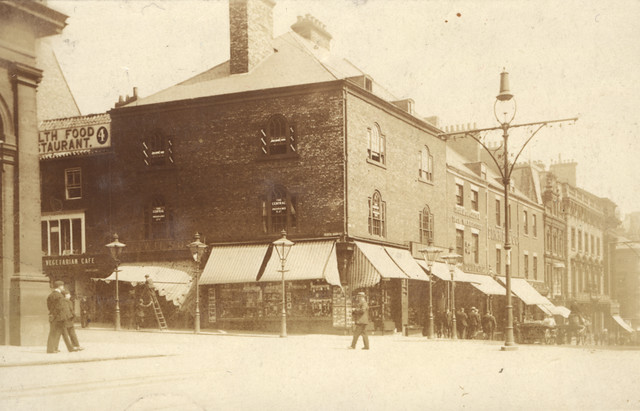26 Mosley Street*, NE1

-
Description
"Built in 1870-72 by John Gibson for the National Provincial Bank. An Italian Palace in High Renaissance style. Inscriptions around the eaves give the bank's name and: on the Dean Street side, the date of its establishment (1833); and on Mosley Street the date of construction of the building (1871) - see [[4411757]]. The building is Grade II listed http://list.historicengland.org.uk/resultsingle.aspx?uid=1355289 . The bank merged with the Westminster Bank in 1968; the "NatWest" became part of the Royal Bank of Scotland Group in 2000 [and we all know what happened to that]. For further info, see the Wiki entry http://en.wikipedia.org/wiki/The_Royal_Bank_of_Scotland_Group . * By the later part of the 18th C, the east-west routes in the centre of the town were inadequate. In 1784-85, a new route from Pilgrim Street to Cloth Market - Mosley Street - was built, including the development of houses, some of which survive. Mosley Street was also linked with a new road from the Quayside - Dean Street. The area rapidly became the main shopping and commercial district of the Georgian town. Towards the end of the 19th C there was a great national expansion of financial institutions. Mosley Street was chosen as the location for regional branches of national banks and insurance companies, who built large, expensive premises. The Buildings of Grainger Town - No.21. See [[4406042]]." Photo by Mike Quinn, 2014. -
Owner
Mike Quinn -
Source
Geograph (Geograph) -
License
What does this mean? Creative Commons License
-
Further information
Link: http://www.geograph.org.uk/photo/4411744
Resource type: Image
Added by: Peter Smith
Last modified: 2 years, 10 months ago
Viewed: 430 times
Picture Taken: 2014-09-13 -
Co-Curate tags








